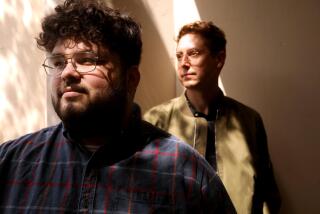Cat, Friends Top Young Transplant Patient’s Agenda
- Share via
--The nation’s youngest heart-lung transplant recipient, healthy for the first time in her life, says she couldn’t wait to see her cat and girlfriends when she arrived back home. “She’s just anxious to get back to a normal life,” said Sandra Fuller, 34, of Yukon, Okla., whose daughter, Kimberly, underwent the double transplant Nov. 20 at Children’s Hospital of Pittsburgh. No longer restricted by oxygen tanks, the 9-year-old Kimberly has increased her stamina by riding an exercise bicycle, and her appetite has improved, according to her mother. “She’s stronger every day, she’s gaining weight,” she said. The fourth-grader received the heart and lungs of an Arizona boy during a 5 1/2-hour operation. Kimberly suffered from a rare degenerative condition that was destroying her heart and lungs. She even offered to donate her remaining good organs if her life could not be saved by a transplant. “She says she’s lucky,” Fuller said, “and that, if she had to do it again, she would still offer to donate her organs.”
--Hosts of a chic catered affair for Hollywood stars in the nation’s capital, held in a rat-infested shelter, were celebrating the third anniversary of their home for the homeless and the filming of a movie about their lives. Mitch Snyder, leader of the Community for Creative Non-Violence, who runs the shelter, said the party marks three events: the beginning of filming today of a made-for-TV movie about his work with the homeless, the shelter’s third anniversary and his perceived victory over government threats to shut down the shelter. Actor Martin Sheen is cast as the outspoken Snyder and Cicely Tyson will play a street woman. Shelter residents will play themselves.
--Albert Hofmann, the inventor and the first to experience the hallucinatory effects of the drug LSD, celebrated his 80th birthday Saturday, still convinced of his discovery’s overall benefits to humanity. “LSD can be good, even necessary . . . in the area of experimental psychiatry,” the Swiss former research chemist told the Geneva newspaper La Suisse in Zurich, Switzerland. “The abuses it has been subject to have nothing to do with my work and I am in no way responsible for them.” Hofmann, who worked for the Basel-based pharmaceutical company Sandoz AG from 1929 to 1971, produced LSD as a possible means of improving circulation in 1938 and tried a large dose on himself five years later. Although first hailed as a drug with important applications for the treatment of neuroses and the study of psychosis, it quickly became subject to massive abuse and was withdrawn by the company.
More to Read
Sign up for Essential California
The most important California stories and recommendations in your inbox every morning.
You may occasionally receive promotional content from the Los Angeles Times.













